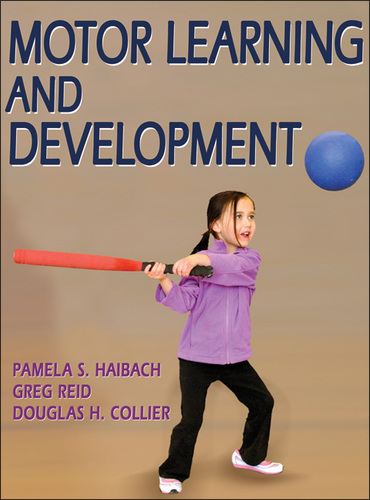
from Human Kinetics:
Distinction Between Skill and Ability
Distinction Between Skill and Ability
Abilities are genetically predetermined characteristics that affect movement performance such as agility, coordination, strength, and flexibility. Abilities are enduring and as such, difficult to change in adults. Abilities differ from skills in the sense that skills are learned, whereas abilities are a product of both learning and genetic factors (Fleishman, 1964). Skills are a level of proficiency on a specific motor task, while abilities are part of an individual’s traits that affect her capability to become skillful when learning a new motor task. For example, abilities that are required for a skilled race car driver include rate control, manual dexterity, stamina, control precision, and reaction time; a typist needs to have abilities in aiming and finger dexterity; a surgeon requires arm–hand steadiness and multilimb coordination; and a figure skater performing the triple axel requires abilities such as explosive strength, dynamic flexibility, gross body coordination, and multilimb coordination (refer to table 2.2 on p. 38 for the description of each motor ability).
| |
Factors Affecting Abilities
An individual’s abilities are shaped by biological and physiological factors (Fleishman, 1964). The composition of an individual’s muscular tissue is certainly going to affect his physical proficiency motor abilities such as strength, endurance, and flexibility. Physiological deficits in the development of rods and cones would also limit an individual’s perceptual–motor abilities, potentially affecting reaction time. Abilities are also affected by environmental factors. For example, children who are afforded formal education will continue to develop their verbal and reasoning abilities throughout their academic years, just as children who participate in physical fitness- or sport-related programs will develop their motor abilities. The rate at which abilities develop varies across childhood and adolescence, both within individuals and across individuals. This is largely due to growth and maturation changes. The rate of development levels out between the ages of 18 and 22 years, remaining relatively stable throughout adulthood (Fleishman, 1964).
Motor Ability Hypotheses Initial researchers in the area of motor abilities hypothesized the existence of only onegeneral motor ability (Brace, 1927). This hypothesis was based on observations of accomplished athletes who were adept at many athletic events and also able to quickly learn new and unfamiliar motor skills. It is likely that you know of athletes in your age group who fit this description. Perhaps the star quarterback from your high school, who led the basketball team to state championships and held the school batting average record, comes to mind. It may appear that there are many athletes who are capable of performing very skillfully across many different motor skills. Research examining individuals’ performances across different activities supports the notion that every motor skill requires very specific abilities for skillful performance. This has been termed the specificity hypothesis (Henry, 1968). Henry proposed that each individual has a large number of separate and independent abilities. Fleishman (1962) developed a taxonomy to identify each ability and separated abilities into two main categories, perceptual–motor abilities and physical proficiency abilities (table 2.2). Although it is doubtful that Fleishman’s taxonomy is an exhaustive list of motor abilities, it does provide a framework to assess individual differences. |
No comments:
Post a Comment